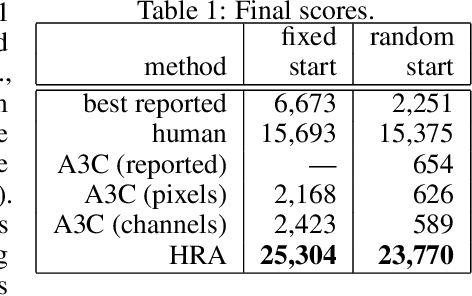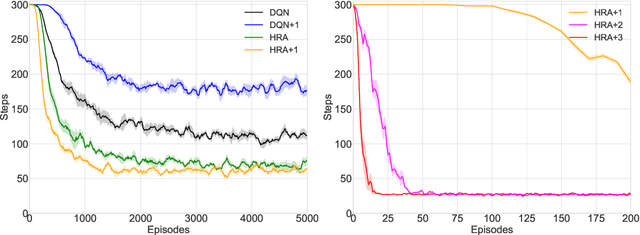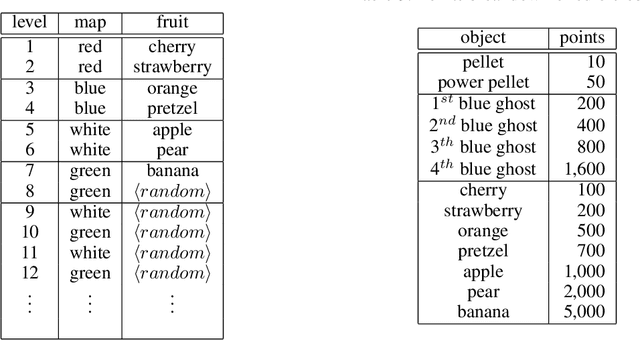Jeffrey Tsang
Hybrid Reward Architecture for Reinforcement Learning
Nov 28, 2017



Abstract:One of the main challenges in reinforcement learning (RL) is generalisation. In typical deep RL methods this is achieved by approximating the optimal value function with a low-dimensional representation using a deep network. While this approach works well in many domains, in domains where the optimal value function cannot easily be reduced to a low-dimensional representation, learning can be very slow and unstable. This paper contributes towards tackling such challenging domains, by proposing a new method, called Hybrid Reward Architecture (HRA). HRA takes as input a decomposed reward function and learns a separate value function for each component reward function. Because each component typically only depends on a subset of all features, the corresponding value function can be approximated more easily by a low-dimensional representation, enabling more effective learning. We demonstrate HRA on a toy-problem and the Atari game Ms. Pac-Man, where HRA achieves above-human performance.
The parametrized probabilistic finite-state transducer probe game player fingerprint model
Jan 29, 2014



Abstract:Fingerprinting operators generate functional signatures of game players and are useful for their automated analysis independent of representation or encoding. The theory for a fingerprinting operator which returns the length-weighted probability of a given move pair occurring from playing the investigated agent against a general parametrized probabilistic finite-state transducer (PFT) is developed, applicable to arbitrary iterated games. Results for the distinguishing power of the 1-state opponent model, uniform approximability of fingerprints of arbitrary players, analyticity and Lipschitz continuity of fingerprints for logically possible players, and equicontinuity of the fingerprints of bounded-state probabilistic transducers are derived. Algorithms for the efficient computation of special instances are given; the shortcomings of a previous model, strictly generalized here from a simple projection of the new model, are explained in terms of regularity condition violations, and the extra power and functional niceness of the new fingerprints demonstrated. The 2-state deterministic finite-state transducers (DFTs) are fingerprinted and pairwise distances computed; using this the structure of DFTs in strategy space is elucidated.
* 17 pages, 35 figures
 Add to Chrome
Add to Chrome Add to Firefox
Add to Firefox Add to Edge
Add to Edge